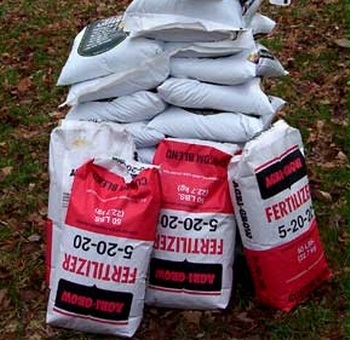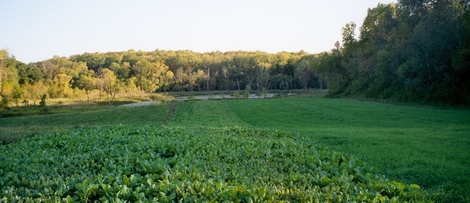Once you’ve had your soil tested, identified your soil’s pH, and corrected any issues, the next concern is how much fertilizer will you need? Nitrogen (N), phosphorus (P), and potassium (K) are the main concerns. Typically, one of the most obvious signs of a lack of nitrogen is stunted forage growth and yellow leaves or stems. Why does this happen?
Because nitrogen makes forage, leaves grow green and grow fast, especially if you are planting and growing grasses. However, if you are planting clover, the nitrogen won’t visibly help the plant since clover fixes its own nitrogen, but planting clover with grassy plants does work in a mutually positive way.

Buying Fertilizer for Your Food Plot
On each bag of fertilizer there will be three numbers corresponding to the ratio or nitrogen, phosphorus, and potassium per 100 pounds. For example, a fertilizer marked as 5-10-15 has five pounds of nitrogen, 10 pounds of phosphorus, and 15 pounds of potassium for every 100 pounds of fertilizer.
If your soil test results show that nitrogen is the biggest deficiency of the soil, ammonium nitrate may be your best option. Ammonium nitrate is listed as 34-0-0, so 34 pounds of nitrogen per 100 and zero phosphorus or potassium.

Food Plot Fertilizer Recommendations
Soil reports are more than the big three macronutrients. Detailed soil reports also list secondary nutrients such as calcium, magnesium, and sulfur as well as the micronutrients zinc and manganese, but once optimum pH is achieved, the secondary and micronutrients will often be corrected. Pay attention to pH as it’s important for micronutrients and the overall production value of the food plot.
Ideally, you want to get the pH level around 6.5 for optimum growth. Buying lime in bulk is a very considerable savings over the 40-pound bags of pelletized lime. In some areas, you can buy and have bulk lime spread over the land for around $50 a ton. Pelletized lime is about $3 per 40-pounds, so it would take 50 bags to equal one ton. That’s $50 for a bulk ton versus $150 a pelletized ton, making a big difference on a per acre basis. It adds up!
How Much Per Acre?
In short, once you have your soil analyzed, do what is necessary to correct for your soil’s deficiencies in order to get great performance out of your food plot, but shop around. Do a little shopping around online to get an idea on cost then call, or better yet, head to the feed store or agriculture supply dealer find out where you can save some money! Now, you are just about ready for that cool season or warm season food plot.